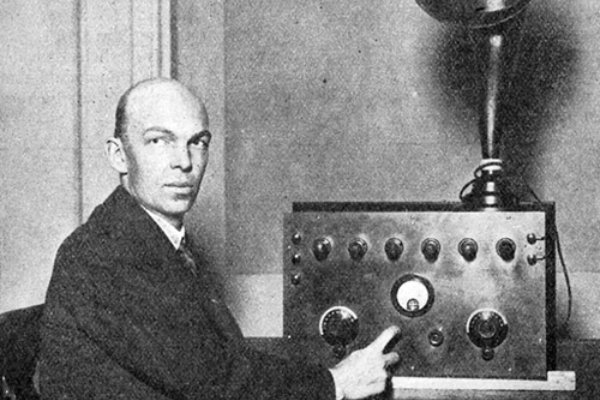EDWIN H. ARMSTRONG
Born in 1890, inventor Edwin Howard Armstrong was impressed by the work of Guglielmo Marconi and Lee deForest and took their innovations to a new stage.
Early in the 20th century, Lee deForest had invented a three-element electron tube. Armstrong redesigned that tube to feed electrons from the transmission back through the tube. This “regenerative circuit” allowed radio engineers to broadcast a more powerful signal.
During World War I, Armstrong served in the signal corps and invented a small, lightweight radio for airplane pilots. During that time, Armstrong also developed the superheterodyne circuit, which changed, amplified and transformed radio waves into sound vibrations. The superheterodyne became an integral part of commercial radios, allowing listeners to tune into a single station with optimum reception.
Purchasing Armstrong’s regeneration and superheterodyne patents, Westinghouse was able to start up the nation’s first regular radio station, KDKA/Pittsburgh. In the 1930s, Armstrong’s efforts to create “staticless radio” led to the invention of wide-band frequency modulation and the development of FM radio.
Edwin Armstrong died on January 31, 1954.
He was inducted into the Radio Hall of Fame in 1990.



